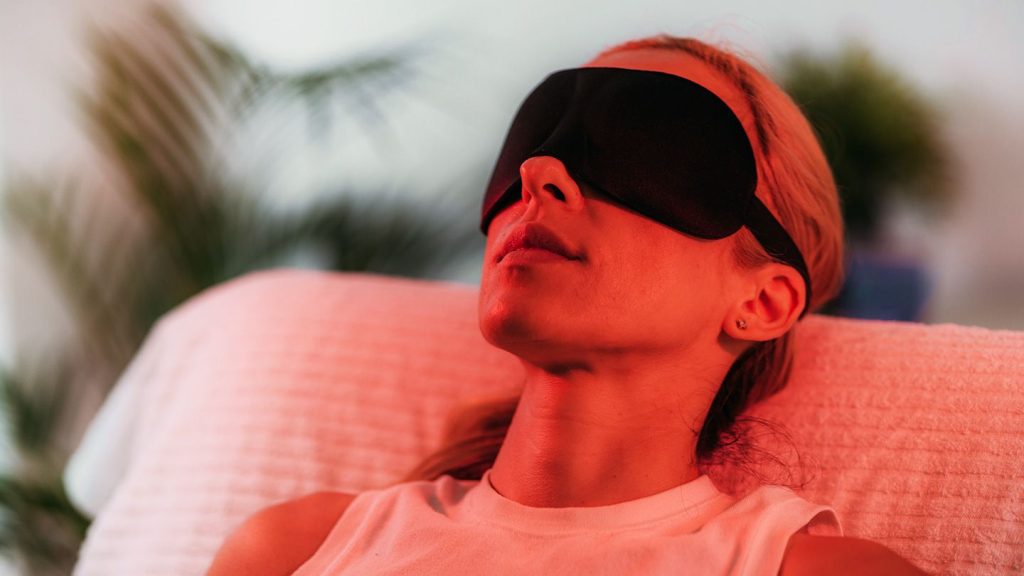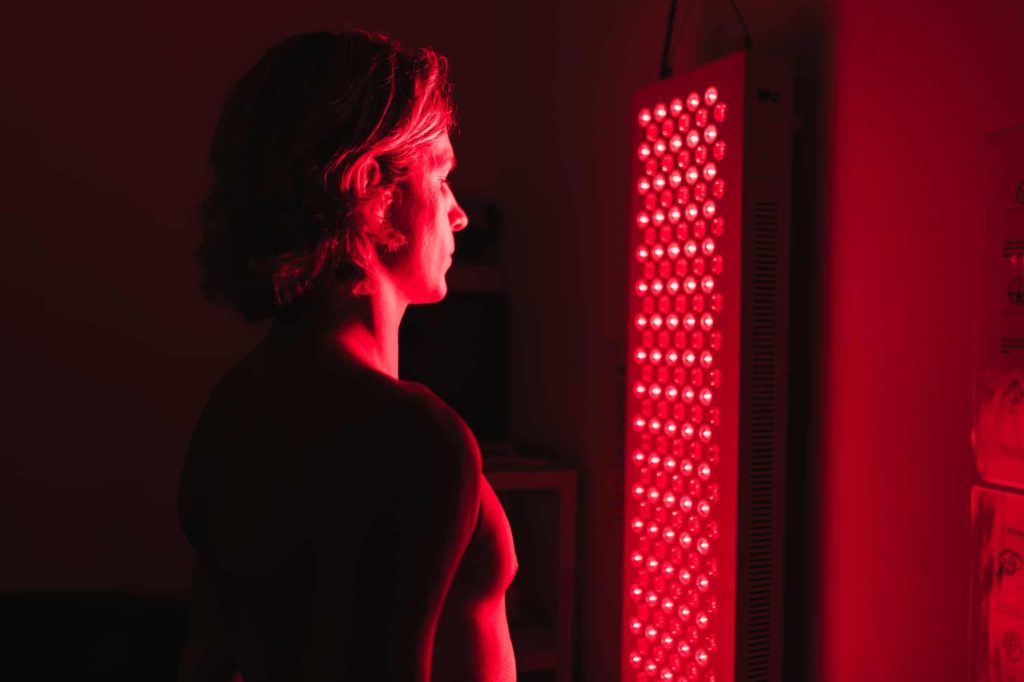We know that red light therapy helps treat many skin conditions, but whether you already use RLT or plan on using it in the near future, you might wonder if there are permanent results from red light therapy.
Nowadays, RLT has made its way into the skin-care-obsessed public. Formerly known as a treatment exclusively available in the doctor’s office, now everyone can use it at home. However, is red light therapy permanent or effective? Let’s find out!

Source: reviewed.usatoday.com
Is Red Light Therapy Permanent?
LED light therapy is a painless, non-invasive treatment, and therefore there’s no need for an interruption between sessions.
You may notice minor benefits after your first session. Once you’ve completed your treatments, the results will be more dramatic and obvious. Even if you complete the necessary sessions, your results will not be permanent. That’s because the skin is the largest human organ that constantly renews itself. So, even if you use red light therapy, once you stop with the treatments, the effects might be lost, and you’ll need to start with the treatments from scratch.
As your skin cells renew, you may lose some collagen and notice signs of aging. Acne outbreaks are also possible. This is why you are advised to return for maintenance treatments every few months or as directed by your practitioner.
Since the light frequencies aren’t as high, home LED light therapy treatments aren’t as effective and might take more time to show promising results.
Effectiveness period
Even though red light therapy is not permanent, most experts believe they don’t know if RLT is effective for all of its claimed applications. Most experts agree that the trials published so far show some promise for some illnesses but that additional research is needed.
Red light therapy is still a new treatment that is gaining popularity. However, there is still not enough data to support that the treatment is 100% effective. A randomized, placebo-controlled trial is the gold standard for determining if a product is effective.
This means that a specified number of participants with the same characteristics get either the study treatment or a placebo for the same condition.
Possible Benefits
RLT is a simple treatment that involves exposing the body to low-wavelength red light. The procedure is also known as low-level laser light therapy. However, RLT is more commonly used.
This red light is natural and can penetrate deep into the skin, where it can be absorbed and used by the cells. This may aid in producing adenosine triphosphate, the energy source for all cells.
Many experts attribute RLT’s potential good effects to this function. With this extra energy, the cells may be able to respond to harm and repair themselves more effectively.
Many types of research demonstrate a promising treatment. However, more extensive clinical trials in people will be needed to establish RLT’s potential applications. Red light therapy might work on many skin problems, such as:
It might help with acne
The sebaceous glands can be affected by sunlight. Sebum, produced by the sebaceous glands, can block pores and cause acne. Sunlight may be beneficial in calming hyperactive glands.
Many individuals are concerned about sunlight exposure because it exposes them to ultraviolet (UV)A and UVB rays, which can cause additional skin problems over time. These can be serious and include the development of skin cancer.
RLT is a potentially successful treatment for acne vulgaris, alone or in combination with other treatments, such as blue light therapy. The light reaches deep into the skin, possibly influencing sebum production and lowering inflammation and irritation.

Source: blockbluelight.com
It might help with reducing pain
RLT may also be an effective pain therapy in some circumstances. The study found that RLT could successfully relieve pain in persons with various musculoskeletal conditions.
The researchers indicate that practitioners who follow the particular dosage instructions appear to boost the therapy’s effectiveness.
It might help with wound healing
Red light may also aid in the healing of wounds, such as:
- Decreasing cellular inflammation
- Angiogenesis is the process of encouraging the formation of new blood vessels
- Boosting the number of beneficial fibroblasts in the skin
- Boosting skin collagen synthesis
- Kill nail fungus
It might help with muscle healing
Sore muscles might result from exercise, especially if you are not used to working out. Lifting heavy objects or engaging in high-intensity exercises can create small rips in your muscles.
Muscles get larger and stronger as they mend themselves. However, in some circumstances, a significant muscular injury might develop after too hard activity.
A red light treatment used immediately before exercise might help prepare your muscles and help you avoid serious injury. You might also expedite healing by exposing your muscles to red light for 10 to 20 minutes after exercise.
A light therapy maintenance program before and after routine exercise might help you get the most out of your activity.
Read more: Are Red Light Therapy Results Permanent?
Is Red Light Therapy Safe?
Red light therapy appears safe and without negative effects, at least when used short-term and as advised. This procedure is non-toxic, non-invasive, and less harsh than certain topical skin treatments.
RLT does not use the cancer-causing ultraviolet (UV) light found in the sun or tanning booths. However, if you fail to use the devices as instructed, you may end up harming your skin and eyes.
The long-term safety of red light therapy devices is unknown. Your best bet is to consult with a doctor or a certified, trained cosmetic therapist. A dermatologist can confirm your skin condition and discuss the benefits of red light therapy and other treatment choices.
Conclusion
So, is red light therapy permanent? Although most people believe the effects are wonderful, they are not permanent. LED light treatment, particularly LED light masks, should not be viewed as the sole cure to all skin problems or as a substitute for a doctor’s visit. To put it another way, consider it a supplement to your skincare program.
RLT is only one component of a comprehensive skincare routine; it should not be the only way a person cares for their skin. It may take multiple RLT treatments for a person to notice changes in their skin. Anyone unsure whether the practice is right for them should consult with a doctor to examine the potential benefits.

Hello! I’m Nicky Rodgers.
Almost a decade ago, I got excited about the idea of employing alternative methods like red light therapy to create a healthier life.
To learn more about it, I did my Certified Light Therapist course from Photonic Therapy Institute and started looking into the intricacies of how light therapy influences several bodily processes. Before I knew it, my interest had become an obsession which resulted in this extensive blog.
Here, I offer countless well-researched articles to help you understand the benefits and uses of light therapy. I hope this information gives you a head start in your wellness journey.
